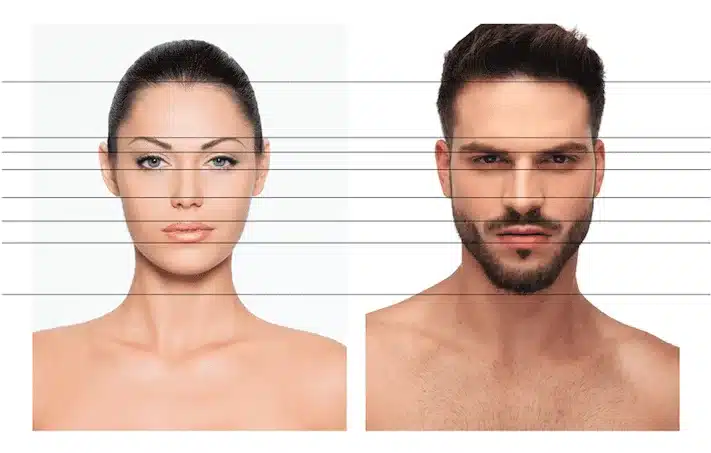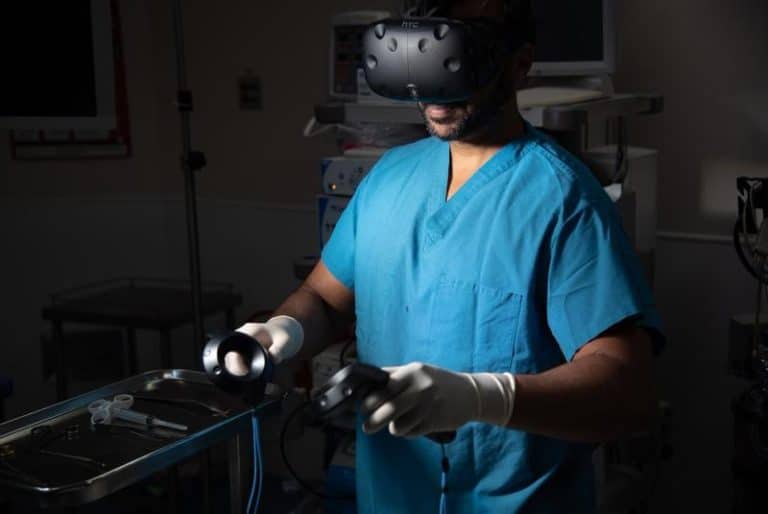My Experience with Liposuction for Treating Hidradenitis Suppurativa
Key Takeaways
-
Hidradenitis Suppurativa is a chronic skin condition. It causes painful lumps under the skin, resulting in scarring and infections.
-
A healthcare professional will perform a physical exam to determine if you have Hidradenitis Suppurativa. Many use the patient’s medical history and symptoms to make an accurate assessment.
-
Treatment options vary from lifestyle changes and medications to surgical procedures, depending on the severity of the condition.
-
Liposuction is becoming more popular as a minimally invasive treatment for Hidradenitis Suppurativa. Its goal is to remove the tissue, relieving symptoms.
-
Liposuction insurance coverage varies widely for treatments. When in doubt, patients should inquire with their provider to see what their plan covers.
-
Educate yourself about all of your treatment options. Talking with a dermatologist will enable you to develop a complete and individualized management strategy for Hidradenitis Suppurativa.
Hidradenitis suppurativa is a long-term skin condition. It causes painful lumps and boils. Treatments range from medications to surgery.
Liposuction then emerges as a promising option. It leaves less scarring and is faster to recover from.
Insurance can be difficult to navigate. Some policies cover this as a medical necessity. I’ve witnessed how confusing this can be for patients. Knowing what your options are might help.
I’ve found that clear, concise information helps. Consider exploring liposuction as a treatment option. We have the details on your insurance coverage.
Know your rights and options; they are valuable. Educate yourself to equip yourself to make the smartest decisions.
What Is Hidradenitis Suppurativa
Definition and Overview
People often hear this the wrong way about hidradenitis suppurativa.
This chronic inflammatory skin condition causes painful, inflamed nodules and sinus tracts.
It mainly affects the hair follicles, with debilitating lesions that can have an enormous impact on quality of life.
This skin disease is debilitating. It inflicts painful discomfort and noticeable symptoms that usually appear as acne or pimples, often resulting in misdiagnosis.
I’ve had cases where it is mistaken for simple skin issues, but it’s far more complex.
The prevalence of hidradenitis stands out, particularly due to its association with other conditions, such as follicular occlusion syndrome.
Its chronic nature means it doesn’t just go away; left untreated, it can lead to severe complications.
This is why early diagnosis and management are key to preventing disease progression, and why awareness and education are necessary for those affected.
Common Symptoms
The symptoms of hidradenitis suppurativa are distinctive but frequently misunderstood.
Patients usually suffer painful lumps and abscesses that ooze a foul smell. You may see erythematous nodules. These red, inflamed bumps can rupture, creating sinus tracts and leaving scars behind. These, unfortunately, are signs of advanced disease.
Aside from the physical pain, the psychological toll is deep. Visible symptoms can have a huge impact on a person’s self-esteem and mental health and make them socially withdrawn.
I have met many who feel alone because of these evident symptoms, and it is clearly a need.
Causes and Risk Factors
The onset of hidradenitis is complex, but genetic predisposition plays a key role.
Hormonal factors also play a role, which is why the disease is more common in some groups than others.
Obesity and smoking are known to worsen the condition, making it more severe. Lifestyle can be an important part of flare-up management.
Mechanical friction and moisture, particularly underarms and groin areas, can lead to uncomfortable chafing.
Interestingly, the autoimmune component could be an influence on the inflammatory response in hidradenitis. This means the body’s immune system can incorrectly attack the normal tissue, causing inflammation.
Understanding these factors is important for managing and for lifestyle changes.
Diagnosing Hidradenitis Suppurativa
Clinical Examination
In diagnosing hidradenitis suppurativa, a comprehensive clinical examination is crucial. It’s all about finding those lesions, measuring how big they are, and determining how far the disease has progressed.
I look for telltale signs, starting with those painful, inflamed bumps and tunnels under the skin. Nothing about the colors can be overlooked.
They can provide clues to the best treatment approach, so take note of where these lesions occur and how big they are.
It’s not just about the skin. I have to take the patient’s general health into account, too. If they have other conditions, like obesity or metabolic syndrome, it gets trickier still.
I always do that holistically to assess everything to get the best results.
Diagnostic Tests
Now, when it comes to tests, they’re not the leading role in diagnosing hidradenitis. They do play a supporting role.
Imaging studies, such as ultrasounds, can sometimes help by demonstrating how much of the tunnels and inflammation is involved.
While there’s no specific lab test for hidradenitis, taking pus samples from lesions can provide hints about infections.
Histopathology involves looking at tissue samples through a microscope. This process shows what kind of inflammatory cells are involved, which helps us see what type of disease it is.
Blood tests? They’re more about ruling out other conditions or checking if the inflammation is affecting the whole body.
Evaluating for infections is also really important because infections muddle the waters a little bit in terms of diagnosing.
Treatment Options Overview
Medical Treatments
On the medication front for hidradenitis suppurativa, it comes down to what fits.
We often take topical and systemic antibiotics first, but those are mild to moderate cases. They also help fight off infections and provide relief from inflammation, which is a huge benefit.
For those more severe cases, biologics come in. These are typically administered by injection and function by modifying the immune system. It’s pretty neat because they can actually break the disease cycle, and we can see improvements in a matter of weeks. For example, a combination of biologic therapy with surgery can reduce active nodules by a staggering 75%.
Then there’s hormonal therapy; some people find that helpful, particularly if hormones are at the root of their symptoms.
Not to mention pain management. The corticosteroids and analgesics can help keep that at bay.

Surgical Procedures
Surgical options come into play when things get more serious. For the ones that are tough, we can think about excision and punch debridement. These techniques typically require a 1- to 2-cm margin to ensure a successful result.
Laser therapy is another option, and it targets those little lesions and prevents them from reappearing.
It’s not all sunshine and rainbows. You may find incision and drainage does bring immediate relief, but it’s not a sustainable solution. The true aim here is to provide substantial symptom control and improve quality of life.
After all, who wouldn’t want to see 83% of treated lesions not return even after 34 months?
Lifestyle and Home Remedies
Lifestyle tweaks can make a world of difference.
A rigorous skincare routine is non-negotiable, keeping symptoms at bay.
Weight management is another star player; it may reduce the number of flares you have.
Making a few adjustments can steer clear of things that may aggravate the situation.
If you’re a smoker, quitting is a total game-changer. It not only helps with symptoms but boosts overall health.
Here’s a handy tip: using an antiseptic wash like chlorhexidine 4% or benzoyl peroxide during showers can sometimes be beneficial.
Liposuction for Hidradenitis Suppurativa
1. How Liposuction Works
Liposuction is a newer surgical technique that uses suction to remove fatty tissue from affected areas. This technique uses a thin tube, called a cannula. Surgeons insert it through small incisions to break up and suck out the fat.
The procedure relieves pressure from inflamed skin, decreasing painful lesions. By removing excess fatty tissue, liposuction can promote better healing and decrease infection risks.
However, it’s important to use specialized liposuction techniques that cater to the specific needs of hidradenitis patients. These methods focus on reducing trauma to the skin and surrounding tissues. This preserves a gentler approach than conventional excision methods, which are usually more invasive.
2. Benefits of Liposuction
The positive cosmetic benefits of liposuction, especially in terms of de-shaping and reduced scarring, are impressive. This is especially true for patients with hidradenitis suppurativa.
In addition to aesthetic benefits, liposuction often results in less pain and discomfort by directly removing the inflamed tissue.
Successful liposuction can mean fewer flare-ups, leading to a better quality of life.
Patients often get psychological benefits, such as increased confidence and self-esteem, from a more desirable body contour.
The reduction in visible lesions and scarring can also have a beneficial effect on social interactions and personal relationships.
3. Procedure Details
Liposuction for hidradenitis suppurativa typically requires local or general anesthesia. The choice depends on how deep the procedure is and the patient’s preference.
Pre-operative assessments are essential to ensure patients are safe and suitable candidates, evaluating things such as skin condition and general health.
The procedure begins with small incisions around the affected areas. Next, the surgeon inserts a cannula to suction out the fatty tissue.
Post-operative monitoring is important to handle any possible complications, like infection or excessive bleeding. Patients are typically instructed to rest and follow particular care instructions to ensure a successful recovery.
4. Recovery and Aftercare
Recovery from liposuction for hidradenitis suppurativa varies but typically takes a few weeks. Following aftercare instructions is critical for healing and preventing infection.
This involves keeping the incision sites clean, wearing compression garments, and avoiding strenuous activities. Patients need to be vigilant for signs of complications, including excessive swelling or unusual discharge.
If they experience any of these symptoms, they should reach out to their healthcare provider immediately.
Can I gradually resume normal activities, and how do I do it?
Regular follow-up appointments are important to assess healing and address concerns with your doctor.
Insurance Coverage for Treatments
Coverage for General Treatments
Business insurance coverage for hidradenitis suppurativa (HS) treatments can vary among providers. This variability often depends on the severity of the condition and the patient’s treatment history.
Insurance typically covers general treatment, including antibiotics and acitretin. These medications are known for their effectiveness, and 65.6% of HS patients see significant improvement after using acitretin.
It is critical for patients to double-check these coverage specifics prior to beginning any treatment.
Documentation is essential. Take detailed notes of your medical history and treatment plan.
This is particularly crucial when requesting prior authorization for certain procedures and medications.
In many cases, insurers will ask for proof of medical need.
That proof can be documented evidence showing how not having surgery could pose a threat to the patient’s health or daily functioning.
Advocating for needed treatments means making a strong case for medical necessity to the insurance company.
Liposuction Coverage Considerations
Getting insurance to cover liposuction as a treatment for HS is a struggle.
One of the biggest challenges is how liposuction is classified. It’s still often seen as a cosmetic procedure, which can block insurance coverage.
However, when classified as medically necessary and properly documented, it is more likely to be covered. The classification depends on proving that liposuction would help with symptoms and improve the patient’s quality of life.
Patients should work closely with their providers to navigate these complexities around coverage. This collaboration can help ensure that all necessary medical documentation is provided to the insurance company.
Margin studies suggest that 1 to 2 cm is often required for surgical intervention in HS. These specifics can strongly support a case for medical necessity.
Tips for Navigating Insurance
Patients should keep careful records of all communications and documentation regarding their care. This will help them talk to insurance representatives.
This includes phone calls, emails, and any submitted forms.
Many people aren’t aware of all the terms and conditions of their insurance policy, which can lead to a lack of benefits during a claim.
Patients may turn to patient advocacy organizations for help. These groups can help guide you with any insurance issues you may encounter.
Understanding the Hurley classification stages can help with discussions with providers and insurers. These stages are based on static disease characteristics like scarring and fistulas, which can impact coverage decisions.
Conclusion
Liposuction provides a glimmer of hope for hidradenitis suppurativa sufferers. It eliminates problematic tissues and alleviates symptoms. Not every case has a solution that fits.
Be sure to talk to a doctor to discuss options. Insurance may cover some treatments, but check the specifics. You want to know what your plan covers.
If this topic stoked your curiosity, learn more. Talk to healthcare pros or join support groups. Your path to relief begins with accurate information.
Have thoughts or questions? Share them. Let’s have that conversation. This is your space to be heard.
Frequently Asked Questions
What is Hidradenitis Suppurativa?
Hidradenitis Suppurativa (HS) is a chronic skin condition. It leads to painful lumps beneath the skin. These lumps can rupture and cause infections. HS often occurs in areas where skin rubs together, such as the armpits, groin, and under the breasts.
How is Hidradenitis Suppurativa diagnosed?
Diagnosis includes a physical exam and history. A dermatologist will look for certain signs such as recurring lumps or abscesses. There isn’t a specific test for HS; though blood tests and biopsies may help rule out other conditions.
What are the treatment options for Hidradenitis Suppurativa?
Treatment depends on severity. Options include lifestyle changes, medications, and surgery. Antibiotics, anti-inflammatory drugs, and biologics are common. In severe cases, surgical interventions such as excision or laser therapy may be indicated.
How does liposuction help treat Hidradenitis Suppurativa?
Liposuction cuts away the affected tissue and removes some sweat glands. It reduces friction and inflammation. This procedure can reduce flare-ups and pain. It’s frequently paired with other treatments for a more effective outcome.
Does insurance cover treatments for Hidradenitis Suppurativa?
Insurance coverage varies by provider and plan. Many plans do cover medically necessary treatments. For surgical options such as liposuction, you may need prior authorization. Insurance companies are particular about coverage, so it’s important to inquire with the provider directly.
Is liposuction a common treatment for Hidradenitis Suppurativa?
Liposuction is not the first-line treatment. Considered when other treatments aren’t successful, dermatologists may recommend it for severe cases. It is a part of a holistic treatment plan for HS.
Are there risks associated with liposuction for Hidradenitis Suppurativa?
Yes, there are risks. Potential complications include infection, scarring, and numbness. Make sure to discuss these risks with a healthcare provider. A thorough evaluation is needed to see whether liposuction is appropriate.






